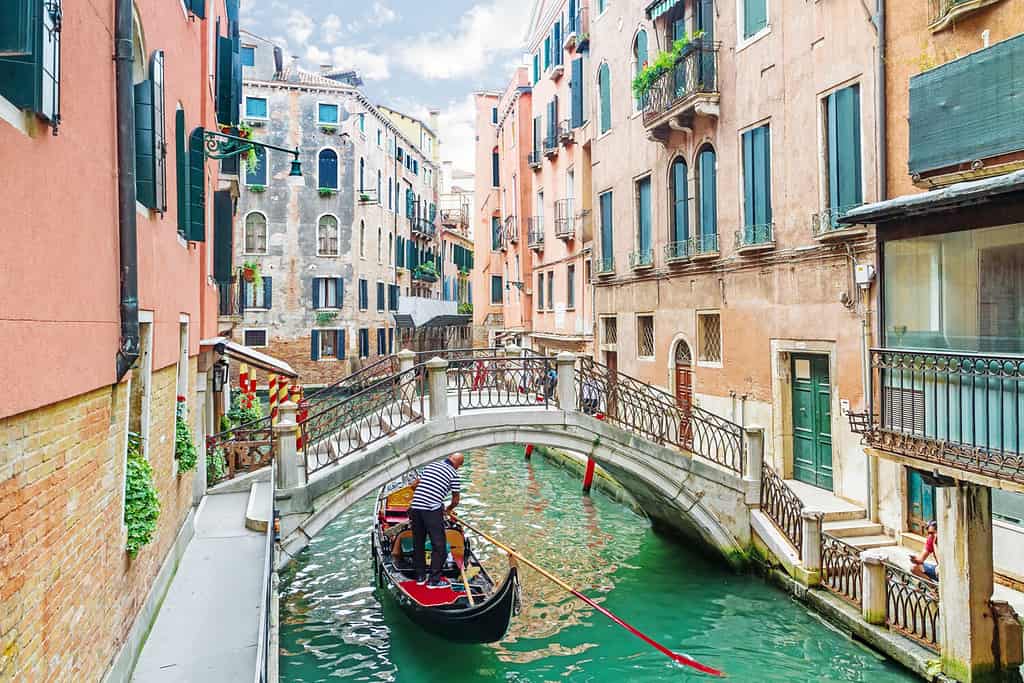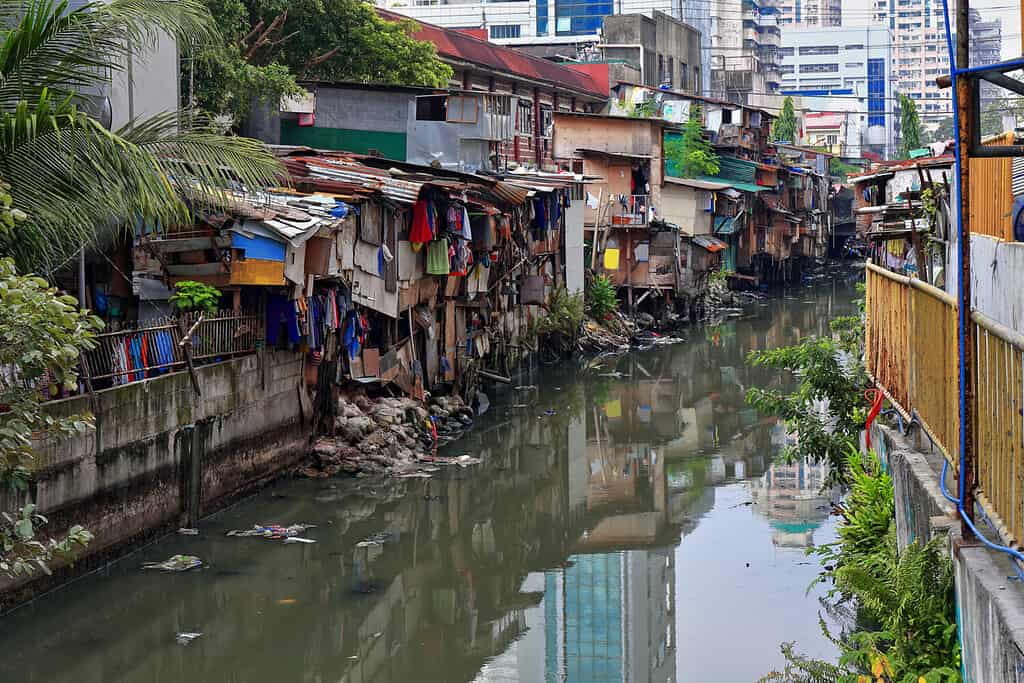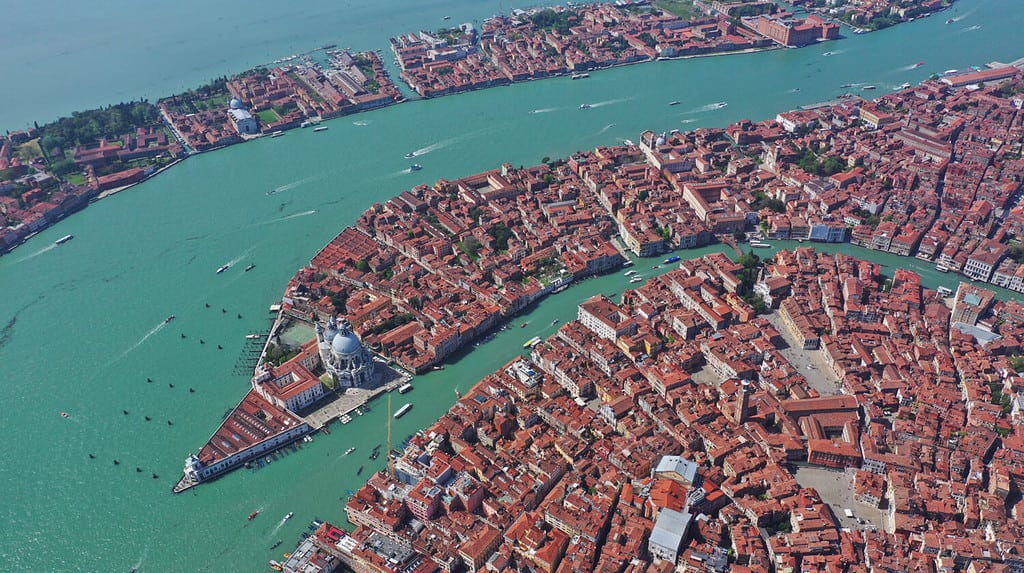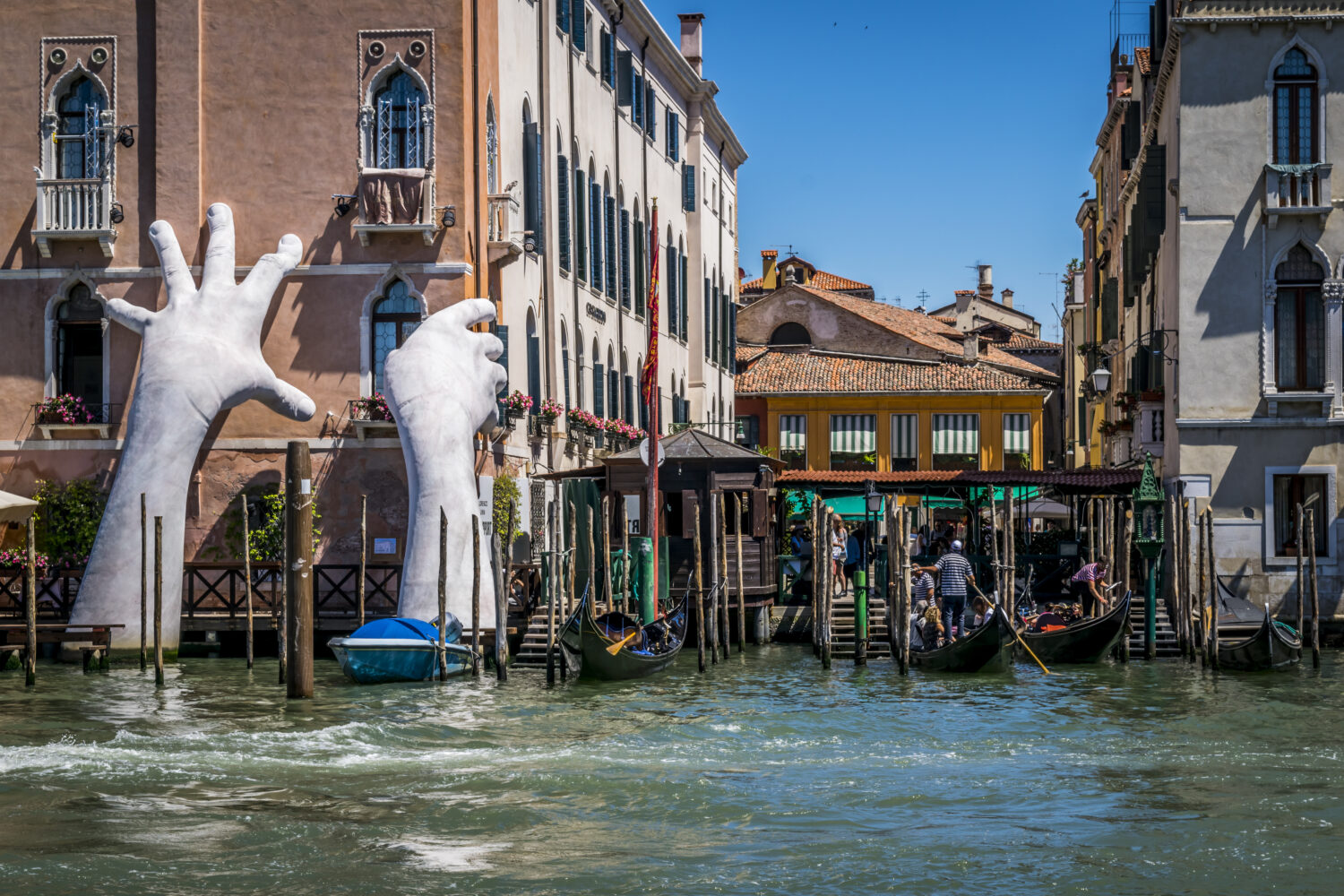Is Venice Sinking Into the Sea? See the Latest Status and Future Plans
Venice, Italy, that enigma of human ingenuity and resilience, is often called “The Floating City.” This city built on water is comprised of 118 small islands interlinked by an intricate system of canals and bridges. It has long captivated the hearts and imaginations of travelers, artists, and historians alike. Yet, beneath its architectural marvels and the shimmering reflections of Venetian Gothic structures on the canal waters lies a disquieting question that has plagued both scientists and citizens for generations: Is Venice sinking?
Indeed, the worry that this aquatic wonderland might one day disappear is not a product of contemporary climate anxieties alone. Rather, it dates back centuries. Now, with the availability of robust scientific data and evolving environmental factors, the question has gained unprecedented urgency.
In this article, we delve into the latest scientific findings that provide nuanced answers to Venice’s precarious state. We explore the main culprits behind its slow descent, from subsidence to rising sea levels. We look into why one of the world’s most iconic cities appears to be tilting toward oblivion. Also, we examine both long-term and short-term solutions. These include the ambitious MOSE project designed to barricade Venice against high tides. And also grassroots efforts that aim for a more sustainable future for the city.
So, whether you’re a concerned environmentalist, an intrepid traveler, or simply an aficionado of intersections where history, culture, and science meet, join us in exploring the fate of this irreplaceable treasure of a city.
The Hard Data: How Fast Is Venice Sinking?
According to recent studies, Venice is subsiding at a rate of approximately 1 to 2 millimeter (or around 0.04 to 0.08 inch) per year. At this rate, the city will sink by around 80 millimeter (3.15 inches) relative to sea levels within the next two decades. Venice’s slow descent has historical precedents, yes. This is owing to the settling of lagoon sediments and the pumping of freshwater from aquifers beneath the city. But rising sea levels due to global warming have escalated the problem.

©g215/Shutterstock.com
The Underlying Culprits: Why Is Venice Sinking?
To understand the descent of Venice, multiple factors come into play. Firstly, the city rests on a muddy lagoon with foundations that were inadequate from the start. Over time, the ground beneath has compacted, pulling the city further down. Early industrial projects like offshore piers and the railroad bridge to the mainland also left an indelible impact on the sea floor and tidal cycles. These made the city increasingly susceptible to flooding.
Moreover, Venice’s troubles were exacerbated during the 20th century. Industrial activities pumped out massive volumes of groundwater from beneath the lagoon for nearly five decades. Though the practice was halted in the 1970s, the damage was already done. Geological factors, like the subduction of the Adriatic plate beneath the Apennine mountains, add another layer to this complex issue.
Acqua Alta: A Natural Phenomenon on Steroids
Acqua Alta, an Italian phrase meaning “high water,” is more than just a seasonal inconvenience for the inhabitants of Venice. It’s a natural phenomenon that’s become supercharged in the modern era. For centuries, Venetians have coexisted with these sporadic high tides that drench the city’s cobbled pathways and flood its iconic plazas. Nowadays, Acqua Alta events are reported approximately 100 times a year, up from just a handful a few decades ago. When Mother Nature’s routine spectacle becomes almost a weekly affair, it’s time to look at the bigger picture.
The Mechanics of Acqua Alta
At its core, Acqua Alta is a product of gravitational forces. Tides in the Venetian Lagoon are influenced by the gravitational pull of the moon and sun, wind conditions, and the geographical features that create a sort of funnel directing water into Venice. In most cases, Venetians can predict the timing and severity of these high tides. This in large part thanks to their intricate understanding of these natural elements.
What distinguishes Acqua Alta from typical high tides is its sheer intensity. Water levels can rise to an astonishing 140 centimeters (4.6 feet), swallowing entire sections of the city. Though unsettling, Venetians had developed remarkable ways to cope, constructing platforms known as passerelle for people to walk on and installing water barriers on doorways.
Climate Change: Adding Fuel to the Fire
While Acqua Alta is hardly a new concept for Venetians, what is alarming is its increasing frequency and severity. Many scientists attribute these shifts to climate change. Global warming has contributed to the melting of polar ice caps and the thermal expansion of oceans. This has resulted in a discernible rise in sea levels globally. For Venice, a city already sinking due to groundwater extraction and the weight of its structures, the problem is particularly acute.
Intersecting Challenges
Here’s where the intersection of human activity and natural phenomena truly becomes harrowing. Sea-level rise not only increases the frequency of Acqua Alta but also augments its impact, turning what used to be manageable inconveniences into significant hazards. Further exacerbating this are the human-made alterations to the Venetian Lagoon, such as dredging canals for boat traffic, which have disrupted the natural flow of water and made the city even more susceptible to flooding.
Can Venice Be Saved From Sinking? The MOSE System
The MOSE system has taken center stage in Venice’s defense against the ominous acqua alta. It’s short for Experimental Electromechanical Model, or Modulo Sperimentale Elettromeccanico in Italiano. Consisting of 78 retractable mobile floodgates stationed at the lagoon’s inlets, the system has been built to block tidal surges from the Adriatic Sea. Since it became partially operational, MOSE has saved Venice from a 120 centimeters (just over 47 inches) flood in 2020. By 2023, these barriers will be activated when the water level is expected to rise 110 centimeters above regular levels.
Swapping Wood for Metal: The Re-Piling Debate
Venice’s foundation rests on wooden piles driven into the lagoon floor. As these ancient timbers rot and sink, the city follows suit. One proposed solution is the replacement of wooden piles with more durable steel or concrete ones.
While this could stabilize the city, the operation is neither cheap nor swift. The costs are astronomical and would require navigating through red tape, potential disruption to daily life, and historical preservation concerns. Nonetheless, if executed meticulously, it could offer Venice a more stable future.
Water and Waste: The Unseen Adversaries
The over-extraction of freshwater from underground aquifers has been a silent contributor to Venice’s sinking. Water-saving initiatives like installing efficient devices and promoting conservation could help lessen this strain.
Additionally, improving sewage treatment plants could decrease pollution in the lagoon. Better-treated water would aid in the health of the surrounding environment. Also, it would potentially reduce Venice’s rate of subsidence.

©rweisswald/Shutterstock.com
Navigating the Future: A Multifaceted Odyssey
Venice’s path to long-term survival involves a complex interplay of engineering marvels, legislative rigor, and behavioral changes. The MOSE system offers a glimmer of hope but is not a silver bullet. Replacing the city’s aging foundations comes with its own set of challenges and costs. Meanwhile, day-to-day habits like water use, waste management, and broader strategies to combat climate change must all be part of a cohesive long-term strategy.
A Timeline: When Will the Final Bell Toll?
Should the current rates persist, and sea levels rise by 180 centimeters (5.9 feet), Venice will sink by as early as the year 2100. That’s right, in less than a century, one of the world’s most romantic cities could vanish beneath the waves. Piazza San Marco, the Grand Canal, and the sumptuous Venetian palaces would be consigned to the depths, swallowed by the same waters that have defined their existence. Such a catastrophic surge would render even innovative solutions like the MOSE system essentially moot.
The Immediate Impact of Sewage Treatment Upgrades
Sewage treatment has often been a neglected chapter in Venice’s environmental tale. But no more. Venice is updating its sewage treatment infrastructure, cutting down lagoon pollution and mitigating further subsidence. The wastewater treatment landscape is evolving globally, with innovations ranging from rapid water treatment technologies to combined green-gray infrastructure approaches.
A Drop Saved is a City Saved: Water Conservation Efforts
Groundwater pumping is a less visible but equally damaging culprit in Venice’s sinking saga. To counter this, the city has embarked on a water-conservation mission, incentivized by programs like the Venice Blue Flag Program and the Venice Green Fund. These funds aim to equip Venice with water-saving devices and promote sustainable water use policies.
Clean and Green: Venice’s Waste Minimization Game Plan
Venice has upped its cleaning ante to expunge plastic waste and other pollutants sullying its lagoon. Spearheading these efforts is the Venice in Peril Fund, a UK-based charity that has been monumental in raising awareness and supporting restoration efforts. Meanwhile, the Venice Blue Flag Program is awarding eco-credentials to businesses that meet specific sustainability metrics, such as waste reduction. Adding another feather to its green cap, Venice has also released a map of public drinking fountains to encourage reusable water bottles and curtail plastic waste.
The Check and Balance: Scrutinizing Venice’s Immediate Fixes
The MOSE System
From the outset, the MOSE system has appeared promising, successfully curbing flooding during high tides. Experts agree that in the near term, this is a formidable line of defense. However, this ambition hasn’t been without its pitfalls—delays and escalating costs have already tarnished its legacy.
Sewage Treatment Upgrades
Upgrading sewage treatment facilities and constructing new ones have been fruitful in reducing lagoon pollution and slowing Venice’s descent. Advanced water treatment technologies are seeing adoption, signaling a positive change.
Water Conservation
Promotion of water-saving devices and conservation techniques have reined in groundwater extraction, a lesser-known contributor to the city’s subsidence.
Waste Minimization and Cleaning
Efforts to curb plastic waste and other pollutants in the Venetian lagoon have been incremental but noteworthy. Programs are in place to incentivize businesses to reduce waste and use resources responsibly.
Limitations and Pathways to Long-Term Sustainability
Vulnerabilities of the MOSE System
While the MOSE system has earned accolades for its current performance, critics warn that rising sea levels due to climate change could limit its future effectiveness.
Incomplete Sewage and Water Solutions
Efforts to improve sewage and conserve water are commendable but inadequate for long-term relief. These initiatives may delay the inevitable but won’t avert it.
Waste Management: A Drop in the Ocean
Cleaning activities and waste minimization, though beneficial, are akin to applying band-aids on gaping wounds.

©Aerial-motion/Shutterstock.com
The Comprehensive Roadmap: A Need, not an Option
Venice requires a multifaceted, long-term strategy that meshes short-term gains with sustainable solutions. This could include integrating cutting-edge technologies, fostering community participation, and investing in resilient infrastructure.
Tackling the Climate Crisis: Beyond Venice’s Canals to a Global Awakening
When we look at Venice’s escalating woes, its incessant flooding and sinking ground, we’re staring at the tip of an enormous, melting iceberg. Venice is, in essence, a canary in the coal mine for climate change, its trials and tribulations symptomatic of a planet in distress. The root of the problem transcends national borders, making it crucial to approach this as a worldwide call to arms.
Global Climate Mitigation: The Big Picture
To save Venice and countless other endangered coastal cities, we need to focus on tackling the climate crisis holistically. That means adopting a two-pronged strategy: local interventions for immediate relief and global actions for long-term impact. A worldwide effort to reduce greenhouse gas emissions is essential here, both to arrest sea-level rise and to curb extreme weather events that exacerbate Venice’s vulnerabilities. The Paris Agreement and other international frameworks offer blueprints for the coordinated, global action needed to turn down the heat.
Infrastructure: A Blend of Green and Grey
Let’s zoom in from the global canvas to the nitty-gritty, everyday systems that keep a city running. The experts are clear: Venice requires a balanced mix of green and grey infrastructure solutions to navigate its myriad environmental challenges.
Green infrastructure refers to nature-based solutions like wetlands, permeable pavements, and green roofs that can absorb water and reduce flooding. These eco-friendly strategies often serve multiple purposes, beautifying urban areas while enhancing biodiversity.
On the other hand, grey infrastructure encompasses the engineered, often concrete, solutions we’re more familiar with—think sewage treatment plants, dams, and levees. For Venice, hybrid solutions could mean combining green infrastructure like restored marshlands to absorb floodwaters with grey installations like the MOSE system to barricade against rising tides.
The interplay between these two approaches could prove invaluable. For instance, effective sewage treatment can involve “living” systems like constructed wetlands for initial filtration, followed by high-tech, engineered processes for final treatment. Such a collaborative approach not only addresses immediate problems but also builds resilience against future challenges.
Charting a Greener Course: Climate-Forward Initiatives
Harnessing Art and Culture: The “Save Venice” Initiative
The Save Venice project started as an endeavor to preserve Venice’s rich artistic and architectural heritage when it was founded in 1966. While its initial mission was circumscribed to art conservation, it has evolved into an influential advocate for the preservation of the city. The organization’s impressive portfolio boasts the sponsorship of over 550 restoration projects, encompassing nearly 2,000 individual artworks. Beyond bricks and mortar, “Save Venice” has been pivotal in publicizing Venice’s battle against rising tides.
The UK’s Charitable Spearhead: The Venice in Peril Fund
The Venice in Peril Fund was established in 1971 in the UK with a focus on amassing resources for Venice’s restoration and preservation. Covering at-risk monuments, buildings, and artworks, the fund has been a financial linchpin for a multitude of projects. More than just a funding body, it doubles as an educational platform that enlightens the global community about Venice’s storied past and its contemporary challenges.
Toward a Greener, More Sustainable Venice: The Venice Sustainability Plan
Adopted in 2019, the Venice Sustainability Plan is the city’s blueprint for an eco-friendly future. Designed to tackle a gamut of environmental challenges—sinking included—the plan unfurls a swath of strategies. These range from water conservation efforts and sustainable tourism promotions to waste management improvements. Its aspirations also extend to mitigating greenhouse gas emissions and amplifying the use of renewable energy. Public transportation enhancements and initiatives to encourage cycling and walking further enrich the plan’s agenda, aiming to foster a more livable environment for both residents and tourists.
The Larger Canvas: Still Much to Be Painted
While organizations like Save Venice and the Venice in Peril Fund have been instrumental in preserving Venice’s cultural gems, and the Sustainability Plan shows promise in addressing environmental woes, there are gaps yet to be filled. The city’s long-term survival hinges not just on individual initiatives but on a cohesive, scalable strategy. This would include a global commitment to climate action and a serious investment in both green and gray infrastructures.

©avphotosales/Shutterstock.com
Challenges and Political Will: Navigating the Murky Waters of Venice’s Future
Fiscal and Logistical Hurdles: Stakes Are High, and So Are the Costs
Combatting the sinking of Venice is a gargantuan task, both financially and logistically. Substantial investment is indispensable, but the challenges are further compounded by the complexity of the solutions involved. For instance, the MOSE system, envisioned as a safeguard against Venice’s chronic flooding, has been beleaguered by delays and budgetary overruns. Yet, the costs aren’t just limited to engineering marvels. Even ostensibly simple solutions, like the replacement of aging wooden piles with more durable materials, demand considerable time and capital.
Furthermore, confronting climate change, a key driver of Venice’s woes, would entail major investments in renewable energy infrastructures. Of course, this isn’t merely a Venice-centric problem. Clearly, it’s a global challenge that mandates comprehensive and, more importantly, costly solutions.
The Political Quagmire: When Sinking Cities and Rising Politics Collide
The threats facing Venice do not exist in a vacuum but are ensnared in a web of global and local politics. For instance, the Italian government has made sweeping announcements for grand infrastructural projects, such as expanding the national high-speed train system or constructing a suspension bridge to Sicily. These endeavors, although essential, raise questions about resource allocation and whether Venice’s urgent needs might be sidelined.
The city’s long-term prospects are contingent on multi-level political will, starting from the local government in Venice to the Italian state, and extending to the international community. While the Venice Sustainability Plan lays a robust framework for a sustainable future, its implementation is inextricably linked to political decisions, financial backing, and international cooperation.
A Global SOS: Venice’s Fate is the World’s Concern
When we talk about Venice’s future, we’re talking about the future of coastal cities everywhere. The interconnected issues of climate change make this more than an Italian affair, it’s a global challenge that demands universal action. We need to band together to slash greenhouse gas emissions, a move that could make or break not just Venice but vulnerable cities worldwide.
The reality is grim: time’s not on Venice’s side, and the culprits are a mixed bag. From natural causes like sinking sediment and tectonic nudges to human triggers like groundwater depletion and climate-induced sea-level rise, it’s a complex mess. Saving Venice requires a multi-layered strategy that melds immediate action with long-term vision, all underpinned by adequate funding and international cooperation. It’s a Herculean task, but if enough of us put our backs into it and all row in the same direction, locals and global citizens, Venice could not only survive but also serve as a roadmap for resilience and adaptation.









